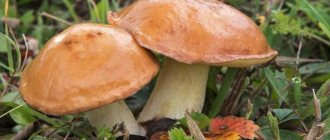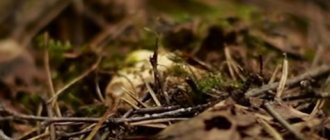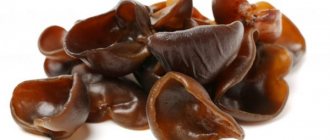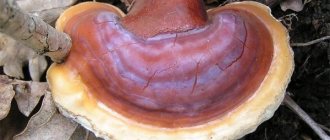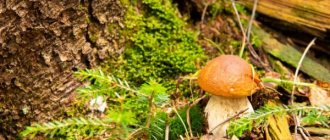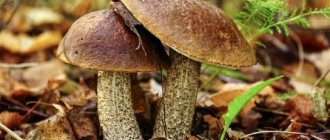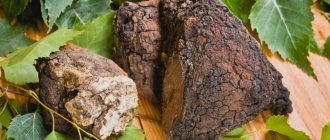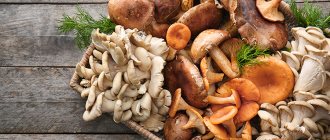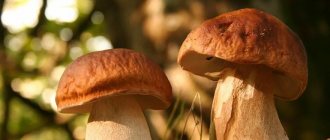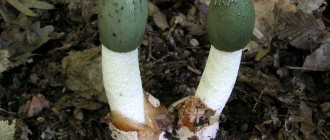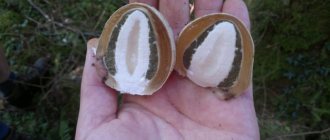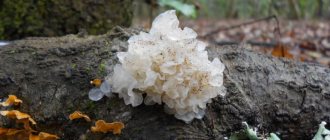Chaga is a sterile (in other words, sterile) form of the fungus Polypore or Inonotus oblique. Belongs to the genus Inonotus, division Basidiomycetes. Chaga got its more famous name - birch mushroom - for a reason: it most often grows on birch trees (downy and drooping species), less often it affects other crops - rowan, alder, beech, elm, maple. Widely distributed in birch groves, in the taiga and forest-steppe of central Russia, Ukraine, Belarus, where it grows almost everywhere. Found in the northern United States and Korea.
What do we know about chaga? Since ancient times, preparations from this eccentric mushroom have been used as an antitumor and antigastritis agent. The mushroom was used not only for treatment - it was used to make crafts and amulets. Today, many people who have had to deal with oncology know about the beneficial properties and uses of chaga. We did not ignore this topic either.
Features of parasitism
Chaga can be called a unique mushroom, the life of which begins with a small spore of Inonotus obliquus. Once on a damaged area of tree bark, the spore germinates and typical comb-like growths are formed. Infection leads to white heart rot of wood.
Light yellow stripes and spots form in the false nucleus, which subsequently merge and expand. In rotten wood, the annual layers are easily separated one from another. A brown protective zone is formed around the rot, black lines can be seen inside, and inclusions of rust-colored mycelium are visible at the break. Growing to sometimes enormous sizes, chaga accumulates in its body useful substances that it receives from the tree.
Uniqueness and indications for use
Chaga is a unique and amazing creation. From a small spore, the mushroom grows to large sizes and is saturated with useful substances coming from the birch tree on which it grows. The active components of this unique mushroom, such as zinc, potassium, iron, polysaccharides, etc., are necessary for the functioning of human organs, and if at least one of them is missing in the body, the disease begins. Chaga helps replenish these beneficial substances, which is why it is used.
Numerous beneficial properties determine the use of birch chaga for:
- duodenal and stomach ulcers;
- gastritis;
- benign and malignant tumors;
- diabetes mellitus;
- diarrhea and constipation;
- diseases of the heart and nervous system;
- hypertension and anemia;
- infectious diseases;
- skin diseases.
Morphological description and botanical features
The body of chaga appears 3-4 years after infection. It is represented by black comb-like growths of irregular shape, penetrated by veins of colorless hyphae. Dimensions: from 4 to 40 cm in diameter, from 10 to 15 cm in thickness. When cut, the body has a dense dark brown structure. At the point of contact with the tree, the flesh is colored reddish-brown. The surface of the growths is riddled with cracks.
The lifespan is 10–20 years: the fungus grows and goes deeper into the wood; after a few years, the fruiting body of the fungus with spores, which consists of tubes, sprouts on the opposite side. It develops under the bark, hyphae can spread 0.5-1 m along the length of the trunk. When the spores mature, comb-like projections are formed that penetrate the bark, exposing the brownish-brown hymenophore. At first the spores are colorless, then become reddish. The walls of the spores are thick, with one or two drops of oil inside. Over time, the tree dies.
Medical myths about mushrooms: chaga
Probably the most famous medical charlatan on the territory of the USSR was Duremar from the 1975 film “The Adventures of Pinocchio.” “These little boogers, very expensive little leeches, will help you against bronchitis, tonsillitis, liver, spleen, polyp and flu,” he sang. One of the modern versions of such universal “boogers” is mushrooms: according to people who want to profit from them, they will cure dysentery, typhoid fever, all kinds of cancer and other ailments. But is this really so?
Many people remember from school that mushrooms are not plants, although the science that deals with them, mycology, has long been part of botany, as it happened historically. They have a special cell wall - not made of cellulose, like plants, but of chitin. They do not photosynthesize, but absorb organic compounds from the environment. Fungi can reproduce vegetatively, that is, by parts of the mycelium or, in the case of unicellular fungi, by budding from the mother cell, as well as by various types of spores formed both sexually and asexually. Some fungal spores have flagella that allow them to move through liquids. Mushrooms do not have flowers or seeds.
N.B. _ We usually call “mushrooms” the fruiting bodies of the so-called higher fungi, ascomycetes (typical representatives: morel, truffle, cordyceps) and basidiomycetes (champignon, white mushroom, fly agaric, oyster mushroom). Although, strictly speaking, the mushroom is a mycelium (mycelium) together with fruiting bodies. Contrary to ordinary knowledge, not all mushrooms have the usual fruiting bodies in the form of caps on stems or even in the form of something visible to the eye. Mycelium, or mycelium, is the vegetative body of a fungus, representing an extensive network of thin, up to one and a half micrometer, threads called hyphae and having such interesting properties that some scientists are working on creating biological computers based on the mycelium. There are also unicellular fungi, yeast, for example.
Shapes of mushroom fruiting bodies.
Mushrooms are credited with healing properties for a reason: the kingdom of mushrooms is special, as if shrouded in a veil of mysticism. In the folklore of various peoples, for example, in the Ket (Kets are one of the indigenous small peoples of Siberia), mushrooms were identified with decayed phalluses, and as recently as the 1990s, the prominent “theorist of mushroom science” Sergei Kuryokhin spoke from the TV screen, shocking the Soviets citizens that Lenin was a mushroom, and every mushroom is a radio wave!
Ket's fairy tale. // Anuchin, V.I. Essay on shamanism among the Yenisei Ostyaks. - St. Petersburg, 1914.
Despite the fact that today few people would think of taking Kuryokhin’s joke or Ket fairy tales at face value, slightly less grotesque myths about mushrooms continue to exist, passed from mouth to mouth, from WhatsApp to WhatsApp, and are perceived by many people completely uncritically. These myths are different. For example, about toxicity: a la “a silver spoon turns black in a decoction of poisonous mushrooms”, “alcohol neutralizes poisonous mushrooms” or “insect larvae do not eat toadstools”. Of particular note is the conspiracy myth that in baking, instead of “ordinary” yeast, supposedly poisonous “thermophilic” yeast is used, with which omnipotent attackers infect the population. In fact, ordinary baker's yeast is used in industrial baking of bread, most often Saccharomyces cerevisiae
, a species of Saccharomyces. In the oven, at the temperature of baking bread, the yeast dies, and even if you eat raw dough for some purpose, most of the baker's yeast cells will die in the acidic environment of the stomach. In general, baker’s yeast has no chance of somehow infecting a person, and they don’t need it.
A separate category is harmful medical myths that you can cure something with the help of specific mushrooms. Harmful - because someone can start taking mushrooms, refusing classical therapy in the fight against a serious illness, and this will increase their chances of a bad outcome. Among the mushrooms that appear in such myths are the birch mushroom (chaga), kombucha (medusomycete, a symbiosis of various yeasts and bacteria that form zooglea, a mucous formation, which in everyday life is called kombucha), shiitake and cordyceps.
By the way, mushrooms have really been useful to humanity in medicine, but not quite in the way that charlatans talk about it. The first antibiotics, streptomycin and penicillin, were isolated from the waste products of mold fungi.
Chaga is a mushroom with which everything is not so simple
Chaga ( Inonotus obliquus
), “black birch mushroom”, is a sterile (sterile) form of the beveled tinder fungus. In appearance, it resembles an overgrown wart on the trunk of a birch tree.
Birch chaga.
There are various stories about the healing properties of chaga - that it helps “from cancer,” gastritis, diabetes and other ailments. Where do they come from, and which of them are true and which are lies? Let's turn to history. Massive research into the pharmacological potential of chaga began in the 1950s in the USSR, although there were isolated cases of chaga research in pre-Soviet Russia, according to some sources. All this happened in the wake of global interest in traditional medicine.
Some active ingredients of modern medicines are borrowed from folk recipes, for example, the antimalarial drug artemisinin was “dug up” from the depths of Chinese traditional medicine. In principle, this is a reasonable approach: check whether a folk medicine works or not, and, if it does, conduct thorough research, isolate the active substances and learn how to synthesize them. From time to time, the medical potential of “herbs and mushrooms” is studied even now.
According to studies from the mid-second half of the 20th century, chaga has an anti-inflammatory and tonic effect, and also affects the development of various cancer tumors and the course of gastritis in model animals. Soviet scientist M.P. wrote about this in the early 1960s. Berezina, who, together with her colleagues, carried out five series of experiments on laboratory mice into which a cell culture of MOP sarcoma (small kidney tumor) was transplanted. In 31 of 44 rats treated with chaga, the tumors resolved, while in the control group all rats died within 28-40 days. At the same time, several experiments were carried out on rats and rabbits with sarcoma or carcinoma cells transplanted into them. Researchers have studied different ways of administering chaga infusion: subcutaneous or oral, as well as different fractions and dosages. In many cases, the appearance of metastases was delayed twice, life expectancy increased, but the animals still died from cancer. It was also studied how the combination of chaga with cytotoxic drugs (which stop cell growth and reproduction) affects cancerous tumors, and again, better results were obtained in the group receiving chaga than in the control group.
In 1955, chaga and its preparations were included in the State Pharmacopoeia of the USSR and approved for the treatment of patients with stage 4 cancer as a symptomatic remedy (that is, improving well-being, but not antitumor). In 1959, the Medgiz publishing house published the book “Chaga and its therapeutic use in stage IV cancer,” which included Berezina’s works. No later than 1984, the drug “Befungin” was registered, that is, a thick extract of chaga, and it is still produced as an “immunostimulating drug of plant origin.”
Bulatov, P.K., Berezina, M.P. and Yakimov, P.A. Chaga, its properties and use in stage IV cancer. Chaga and its medicinal uses. L.: Medgiz, 1959.
When studying Soviet studies of that time, of which there are at least a dozen, it is worth remembering that they were carried out according to now outdated protocols, so you should not rely on them without additional verification. Now, in order to introduce the drug into medical practice, in addition to testing on model animals, clinical trials are necessary (that is, in humans, with a control group), since the body of mice and rabbits is different from ours.
By the 1970s, interest in chaga had faded, but in the 2000s it was revived again, now through the efforts of Chinese and Japanese authors, as well as scientists from the CIS and, to a lesser extent, from Europe. By the way, now Chinese President Xi Jinping (習近平) is actively promoting the large-scale use of Chinese traditional medicine in hospitals and even exporting it to the “West,” so research on chaga in China is not a surprise.
What do these studies tell us? Firstly, chaga polysaccharides and melanins are powerful antioxidants (although the therapeutic effect of antioxidants is overestimated). Secondly, that something in chaga has the potential to fight different types of cancerous tumors. In 2020, work was published showing that polysaccharides isolated from chaga cause apoptosis in lung cancer cell cultures. In laboratory mice that were implanted with melanoma cells (B16F10), survival rate increased fourfold. Another study showed the cytotoxicity of chaga decoction, which is more pronounced in cultures of cancer cells than in cultures of healthy ones. Also, polysaccharides from chaga reduce histamine-induced inflammation of capillaries in laboratory mice (2019), are effective against type 2 diabetes, also in mice (2017), and there are also indications that they can probably slow down the development of Alzheimer's disease.
To this day, the results of studies on model animals and cell cultures continue to be published, with indications that in the future, perhaps, chaga will be used “in the clinic.” But there are no clinical studies yet. This may be because there are too many different potential active ingredients in chaga, and it is not very clear which one or which combination of them to study. In some sources it is inotodiol, in others it is betulin and betulinic acid, in others it is polysaccharides, in others it is humic-like (that is, similar to substances that are often found in humus, fertile soil) chagaic acid. Moreover, the chemical description of the composition of the various “medicinal” forms (solution, decoction, etc.) of chaga varies from source to source. For example, our Russian researchers do not mention betulin, but they talk about chagic acid. What is this humic-like chagic acid? It is not mentioned in any Western literature, but appears in Berezina’s research.
To sum it up, we can say that so far chaga has little benefit for ordinary mortals. We don’t know in what form it would make sense to take it in order for it to have any effect. After all, there are infusions, decoctions, and extracts, and various quack sources advise taking them orally, intravenously, and in the form of a cream, in the form of suppositories and powders... Different forms contain different concentrations of potentially active substances. Moreover, no one can vouch for the exact composition of herbal and mushroom preparations, as well as the decoctions and infusions obtained from them. If we knew how much and what substances are contained in the same chaga decoction, and also had an idea of which substance helps with what, then it might make sense to use chaga. Until this becomes known, relying on it or Befungin, which lacks inotodiol but contains the mysterious chagic acid, is like playing Russian roulette. You can, of course, drink chaga as a dietary supplement, in addition to the main therapy, and hope for the best, but such promising dietary supplements are a dime a dozen, and it is not yet clear what will “shoot” out of them, if it happens at all.
Solzhenitsyn and chaga
So where did modern folk beliefs about chaga come from? One of the earliest popular sources telling about the medicinal properties of chaga is Solzhenitsyn’s novel “Cancer Ward.” The action takes place in a hospital in Central Asia. At the beginning of the novel, the main character talks about a doctor from the town of Alexandrov near Moscow, Sergei Nikitich Maslennikov. This doctor, according to the text, discovered that local men “save money on tea and brewed chaga,” and they were also less likely than others to get cancer. “So it occurred to Sergei Nikitich Maslennikov: isn’t it this very chaga that Russian men have been treating for cancer for several centuries, without knowing it?” — mushroom treatment activist Irina Filippova, owner of the Russian “fungotherapy center,” writes in her book. Dr. Maslennikov allegedly observed for many years those who drink this homemade tea, as well as those who do not drink (that is, the control group), and gave it to those who had already been diagnosed with tumors. Patients who took the tea performed better than the “hospital average.” But we should not forget that Solzhenitsyn’s novel is a literary text and descriptions of research in it can only indicate that the writer was more or less savvy in scientific methodology. Although there are problems with it: correlation does not always indicate a direct causal connection.
The aforementioned Filippova states in her book “Chaga. Mushroom sensation” that Solzhenitsyn, when being treated for testicular cancer in Tashkent, came into contact with this doctor Maslennikov, who, apparently, was a real character, and on his advice was treated with chaga for cancer. Indeed, in the third volume of collected works, published by the Vremya publishing house in 2012, which is entirely occupied by Cancer Ward, we find a commentary compiled by literary critic Vladimir Radzishevsky. It contains an extract from the archives of the house-museum of this same Maslennikov in Aleksandrov. It follows from it that the doctor was a very real person and lived in 1887-1967. Apparently, Solzhenitsyn was really impressed by this healer: in 1995, the director of the Marina and Anastasia Tsvetaev Literary and Art Museum in Aleksandrov sent the writer a letter asking about his connection with the doctor, and he replied: “I consider him [Maslennikov ] one of my saviors during the fatal cancer that befell me in exile in Kazakhstan.”
The fact that such a doctor lived and lived in the Moscow region is not surprising. As we have already written, during the time when he was conducting his medical practice, research on chaga was carried out within the walls of decent scientific institutions. The cunning Maslennikov decided to bypass all stages of preclinical trials and conduct clinical trials himself - on his charges. We will remain silent about the ethics of such a decision, but it is impossible to consider Maslennikov’s results as full-fledged clinical conclusions, since the “research” was conducted in an amateur format and was not documented anywhere except Solzhenitsyn’s novel.
About iHerb and “mushroom pharmacies”
The story of Solzhenitsyn is actively popularized by both Irina Filippova and Mikhail Vishnevsky, a fellow mushroom therapy activist. In addition to references to the writer, Filippova in her books (“Healing mushrooms. Chaga, tinder fungus, cap, witch’s broom, milk mushroom, wave, fungus, puffball, milk mushroom, rice mushroom...”, “Mushrooms against cancer”, “Chaga. Mushroom -sensation") refers to Soviet work in this area (a full list of Soviet works can be found here), which, as we have already said, is not enough to introduce chaga into medical practice.
By the way, Filippova suggests using chaga to treat atherosclerosis, prostate adenoma, chronic bronchitis (including smokers), gastritis, hepatitis (B, C), hemorrhoids, influenza, diabetes, specific putrid breath, varicose veins, uterine fibroids, constipation and flatulence. Such a wide scope of application in itself should be alarming. By the way, to treat hemorrhoids with chaga, she offers chaga suppositories, which are sold in her Mushroom Pharmacy network. And for cosmetic purposes, a recipe is proposed - to spread yogurt with chaga on the face called “Mushroom Fog of Russia”.
Mushroom fog of Russia. Artist's interpretation.
You can’t deny Filippova’s certain literary talent. In order to impress the reader (some grandmother who does not have the means for normal treatment, or a desperate patient), she diversified the language of her works as best she could. For example, using the following headings: “She cured me and learned to wear foot wraps”; “A sticky lump from biting bees”, “Effervescent lotion is a powerful helper for the skin!”, “I forgot my friend - the enema mug” and so on.
In many of the recipes she gives, where she tells how to use chaga and in what dosage, shiitake, fungus mushroom and other “medicinal” mushrooms also appear - in the form of directly fruiting bodies from which a decoction must be made, as well as in the form of capsules and candles. All this is sold at the Mushroom Pharmacy, where the price tag for a jar of capsules starts at 700 rubles. By the way, Filippova warns that chaga can be fake, so apparently you can’t collect it from trees, but need to buy it. Chaga is also sold on the iHerb
, known for the fact that, in addition to quite normal drugs, like aspirin, it actively sells various dubious dietary supplements, products for the “paleo diet” and other “Ayurveda”.
Dietary supplements with chaga from Iherb.
The inscription on the package in the lower left corner: “Sacred Antioxidants.” In addition to Irina Filippova and iHerb
'a, many others are trying to make extra money on chaga - adding it anywhere, for example, in creams (Massage Balm by Valentin Dikul), and publishing books about it (Chaga Mushroom against 100 Diseases).
Mikhail Vishnevsky, the owner of his own chain of mushroom pharmacies (which indicates his personal financial interest in promoting mushrooms, since the trade in dietary supplements is his small candle factory) and the author of books on mushroom therapy, also promotes the use of chaga preparations. One of Vishnevsky’s main arguments is that now, according to him, clinical trials are starting en masse, which cost a lot of money. But Big Pharma
will not waste money! This may be true, but there are still no results of valid clinical trials, and until they come, it is at least too early to follow the advice of Vishnevsky and Filippova. In the best case, if research begins now, the results should be expected in a few years. In the book “Chaga. "Finest Hour" Vishnevsky directly says that it is not necessary to wait for scientific results, it is better to stick to folk methods, since they have been “tested for generations.”
The problem, however, is that no one properly observed, recorded or counted this generational experience, in particular, those who did not help. If a thousand die, and one gets better and he tells what he took, in the “experience of generations” what remains is the story of this one, and not the quiet death of a thousand. In general, references to folk experience should be taken with caution: “among the people” they put out cans, wash down aspirin with vodka, and even drink kerosene. The most reasonable reaction when someone refers to “generational experience” when advising treatment is to run away.
***
Irina Filippova, in a video on the website of her fungocenter, says that her task is to help her homeland. Our task is to help people understand scientific and medical information, so we would like to warn readers against treating with chaga instead of traditional treatment: at best, this will not work, since you do not know the active substance, nor its dosage, nor the method of administration required for treatment. Neither Vishnevsky in his book nor Filippova provide links to scientific evidence of their recipes. Their descriptions and evidence of effectiveness have not been published in any peer-reviewed journals. Our advice - save your money and health, be treated with clinically proven methods!
Sources:
Chaga mushroom against 100 diseases. Author: Sbitneva E.M. Publisher: M.: RIPOL classic. Year of publication: 2009. Pages: 64. ISBN 978-5-7905-3447-8 Fedoseeva G.M. On the use of chaga in medical practice // Sib. honey. magazine - 2004. - T. 49, No. 8. - P. 66-69.
Cui, Y., Kim, D.S. and Park, K.C., 2005. Antioxidant effect of Inonotus obliquus. Journal of Ethnopharmacology, 96(1-2), pp.79-85.
Goswami, SK, 2022. Free Radicals and Reactive Oxygen Species in Cardiovascular Pathophysiology: An Overview. In Modulation of Oxidative Stress in Heart Disease (pp. 403–418). Springer, Singapore.
Jiang, S., Shi, F., Lin, H., Ying, Y., Luo, L., Huang, D. and Luo, Z., 2022. Inonotus obliquus polysaccharides induces apoptosis of lung cancer cells and alters energy metabolism via the LKB1/AMPK axis. International journal of biological macromolecules, 151, pp.1277-1286.
Kim, YO, Park, HW, Kim, JH, Lee, JY, Moon, SH and Shin, CS, 2006. Anti-cancer effect and structural characterization of endo-polysaccharide from cultivated mycelia of Inonotus obliquus. Life Sciences, 79(1), pp.72-80.
Géry, A., Dubreule, C., André, V., Rioult, J.P., Bouchart, V., Heutte, N., Eldin de Pécoulas, P., Krivomaz, T. and Garon, D., 2018. Chaga ( Inonotus obliquus), a future potential medicinal fungus in oncology? A chemical study and a comparison of the cytotoxicity against human lung adenocarcinoma cells (A549) and human bronchial epithelial cells (BEAS-2B). Integrative cancer therapies, 17(3), pp.832-843.
Javed, S., Mitchell, K., Sidsworth, D., Sellers, S.L., Reutens-Hernandez, J., Massicotte, H.B., Egger, K.N., Lee, CH and Payne, G.W., 2022. Inonotus obliquus attenuates histamine-induced microvascular inflammation. PloS one, 14(8), p.e0220776.
Wang, J., Wang, C., Li, S., Li, W., Yuan, G., Pan, Y. and Chen, H., 2022. Anti-diabetic effects of Inonotus obliquus polysaccharides in streptozotocin-induced type 2 mice diabetic and potential mechanism via PI3K-Akt signal pathway. Biomedicine & Pharmacotherapy, 95, pp.1669-1677.
Han, Y., Nan, S., Fan, J., Chen, Q. and Zhang, Y., 2022. Inonotus obliquus polysaccharides protect against Alzheimer's disease by regulating Nrf2 signaling and exerting antioxidative and antiapoptotic effects. International journal of biological macromolecules, 131, pp.769-778.
Berezina, M.P., Bulatov, P.K. and Vandysheva, F.Ya., 1959. The effect of chaga on the development of grafted MOP sarcoma in rats. Chaga and its medicinal use in stage IV cancer: collection of articles. scientific works.—L.: Medgiz, pp.119-126.
Shashkina M. Ya., Shashkin P. N., Sergeev A. V. Chaga in oncology // Russian Biotherapeutic Journal. 2005. No. 4. URL: https://cyberleninka.ru/article/n/chaga-v-onkologii (access date: 10/20/2020).
Collection and preparation
The mushroom is harvested at any time, but it is easier to find it from late autumn to spring, when there is no foliage. In addition, during this period the greatest biological activity of the fungus is observed. To search, they go deep into the forest (removing from trees along busy roads is not recommended), choosing strong trees.
It is not worth cutting the chaga from dead or diseased trees or the bases of old trees - the activity of such chaga is insignificant. Old chaga that is exclusively black in color, which is very large in size and has already crumbled, is also not suitable.
The growth is cut off with an ax under the base, the loose, light-colored part is cut off. The raw materials needed for harvesting are the outer part and the solid middle, without wood residues and loose mass.
The collected chaga is cut into pieces of about 10 cm, dried in dryers or ovens at a temperature not exceeding 60 ºС. In summer, ventilated attics and closed sheds are suitable for drying. Store in a tightly closed jar, exclude moisture, since chaga can quickly become moldy. Shelf life – 2 years.
When and how to collect?
Chaga can be harvested throughout the year. But depending on the season, additional difficulties may arise. Thus, in the summer, picking mushrooms is accompanied by the difficulty of searching under the abundant foliage of trees. In the winter season, the main difficulty is snowy weather. Therefore, spring and autumn are best for collecting chaga.
Also, at different times of the year, mushrooms differ in composition. According to experts, chaga contains the greatest amount of beneficial substances in early spring and late autumn.
To collect this type of mushroom you will need a special tool. The easiest way to achieve this goal is with a thick knife or a small hatchet. The procedure for collecting chaga requires quite a lot of effort and a long time.
Inexperienced people often confuse birch fungus with the pest tinder fungus, which also forms on the trunks of birch trees in the form of a growth. The difference between them is color and appearance. The pest fungus resembles a hoof and is lighter in color than the birch fungus. The color of chaga, on the contrary, is dark – the brown shade is more like black. Unlike chaga, the tinder fungus is easily separated from the tree trunk without additional tools.
The higher the mushroom is located along the trunk from the ground, the more useful it is considered . You cannot collect birch mushrooms from dried trees. It contains a minimal amount of useful substances. It is also not recommended to use chaga grown close to the ground.
To search for chaga, it is recommended to use birch groves. Mushrooms grown close to each other are considered more beneficial.
If the chaga is too old, it will also not be of much use for medicinal purposes. You can determine that a birch mushroom is already old by two signs. First, you need to check the color of the pulp - in old mushrooms it is darker than in young ones. Secondly, you need to find out how durable the mushroom is. Reaching old age, chaga begins to lose strength and collapses under pressure.
Birch mushrooms are collected using the following technology:
- after detecting chaga, it is necessary to cut it parallel to the trunk;
- the largest amount of useful substances is contained in the upper part of the mushroom, so the cut must be made at the junction with the tree;
- Careful movements should be made so as not to damage the tree - after detaching the fungus, the cut site on the birch should be sprinkled with earth (this action promotes healing of the wound).
The further method of preparing the mushroom depends on the purposes for which it will be used.
You can learn more about the features of collecting and preparing chaga mushroom for making medicine by watching this video:
Chemical composition
A complex of biologically active substances was found in the fungus:
- water-soluble pigments combined into a chromogenic polyphenolcarbon complex;
- triterpenoids;
- agaricic, oxalic, acetic, formic, butyric, para-hydroxybenzoic, vanillic acids;
- sterols;
- resins;
- polysaccharides;
- lignin;
- cellulose;
- tannins;
- a large number of macro- and microelements, especially potassium and manganese.
The therapeutic effect in malignant tumors is associated with the action of sterols and agaricic acid.
Video gallery
Video reviews
A selection of videos with descriptions and recipes for preparing mushrooms
about Mushrooms and Plants in Your Own Words, Vesti Perm ONLINE, My treasured taiga
Beneficial properties of chaga mushroom
How is this parasitic fungus useful?
- Has antimicrobial and antiseptic properties . Tannins are involved in the formation of a protective film on the mucous membranes of organs.
- General strengthening, tonic effects . Many natural biogenic stimulants and organic acids that make up the mushroom have a powerful therapeutic effect on the body and normalize the balance of hydrogen and hydroxyl ions.
- Has an antitumor effect when used internally and externally . Decoctions and tinctures of the plant improve the condition of tumors of any location, reduce pain, and help strengthen the immune system. When treating the initial stages of oncology, chaga inhibits the growth of cancer cells.
- Reduces blood cholesterol (see how to clean blood vessels from cholesterol plaques)
- Has an anti-inflammatory effect.
- Reduces blood sugar levels.
- Has hemostatic properties.
- It has diuretic and choleretic effects (see diuretic folk remedies).
- Has an analgesic effect.
- Reduce sweating.
- It has a positive effect on the state of the central nervous system: it activates metabolism in the brain tissue, which leads to an increase in the bioelectrical activity of the brain.
- Increases the body's defense reactions (an effect proven in experiments), has a pronounced adaptogenic effect.
- Helps to attenuate the exacerbation of chronic diseases and improve overall immune status.
- Strengthens the cytostatic effect of cyclophosphamide.
Side effects
- Severe form of dyspeptic disorder;
- Leukocytopenia;
- Decreased platelet concentration in the blood;
- Vomiting or loss of appetite, diarrhea and other eating disorders;
- Peripheral lesions of the central nervous system and increased excitability;
- Anemia and other circulatory disorders;
- Fungal diseases of the skin and mucous tissues of the body;
- Low blood pressure;
- Acute bronchospasms;
- Temporary exacerbation of colds and increase in body temperature;
- Rapid heartbeat associated with internal changes in its tissues;
- Partial or complete hair loss, peeling of the skin and other disorders of the structure of body tissues;
- Drowsiness and increased fatigue, leading to problems with driving;
- A sharp increase in body temperature and severe chills.
Chaga mushroom causes sudden allergic reactions
Research on coronavirus
Novosibirsk scientists at the Vector Center for Virology and Biotechnology have proven that in a test tube, an extract of the birch chaga mushroom can suppress the reproduction of covid particles. This is good news because... Based on this extract, it will be possible to create an antiviral drug. Previously, Vector has already tested the activity of chaga extract towards:
- HIV,
- herpes,
- West Nile virus,
- smallpox.
As a result, aqueous extracts of chaga suppressed these viruses, including HIV, but a drug has not yet been created.
Now specialists applied aqueous extracts of pharmaceutical chaga in different concentrations to cell cultures and after some time they applied a strain of the new coronavirus to them. It turned out that the extract reduces the activity of pathogenic virus particles. Given the low toxicity of the fungus, it is possible to create a drug against coronavirus, and scientists have already applied for a patent.
Researchers have developed several methods for making concentrated aqueous extracts of chaga. The effectiveness of one of the methods, which can be used at home, was tested by one of the authors of the study, his friends, and colleagues. According to them, the symptoms of coronavirus disappeared after 5-7 days. But, since in addition to taking the extract, these people underwent symptomatic treatment (taking antipyretic drugs, etc.), scientists did not conduct a full-fledged study and did not prove the effectiveness of chaga against COVID-19. In this case, it is unknown what helped against the symptoms of coronavirus infection:
- chaga extract,
- symptomatic treatment or
- the illness went away on its own.
We can only hope that the research will continue, the effectiveness will be not only “in vitro” and the drug will be created.
In cosmetology
Chaga is used in cosmetics to maintain healthy skin and hair. Creams and ointments containing chaga provide a rejuvenating effect - the skin of the face is tightened, fine wrinkles are smoothed out.
Mask for oily skin
1 tsp. mix rye flour with 1 tsp. honey Add the yolk and 1 tsp. chaga powder. Mix and apply to face for 15 minutes, then rinse with warm water.
Mask for dry skin
To prepare it, 1 tsp. mix olive oil with 2 tbsp. l. crushed chaga. Add the yolk, mix, add ⅓ cup of boiling water and leave for 1 hour. After this, apply to the face for 15 minutes, then rinse with warm water.
Features of chaga treatment
Medicines based on chaga are taken according to two main schemes:
- short courses of 7-14 days several times a year, taking long breaks;
- long courses of 3-5 months and with short breaks of 7-10 days.
With the first treatment regimen, the therapeutic effect is expected longer. This course is preferable for the prevention of tumor metastasis after good treatment results and for their consolidation. The second scheme provides a quick therapeutic effect.
Unless otherwise indicated in the prescription, take the medicine half an hour before meals . During treatment, a plant and dairy diet is recommended with a limitation of meat, fats, smoked meats, canned food, hot spices, sweets, and alcohol. You can add bran bread and non-carbonated mineral water to your diet. Glucose and penicillin should not be administered intravenously when treating with chaga.
The use of chaga preparations for medicinal purposes is possible only after a diagnosis has been established, especially if long-term treatment regimens are being considered. It is very important to adhere to the dosage regimen, not to increase or decrease the dose. During treatment, you can observe 2 phases of the effects of drugs on the body.
- In the first phase, relief is noted, pain and inflammation are significantly reduced (after about 2 weeks of use).
- The second phase begins after a couple of months: the general condition improves, the person feels well, and upon examination it can be discovered that the disease has subsided.
How to prepare chaga at home?
It is not difficult to prepare a mushroom at home, but you need to take into account that if it is in a dried state, you will need to pre-soak it in boiled water (not boiling water) for 5 or 6 hours. After soaking, chaga is crushed and poured with hot water (about 50 ° C) in a ratio of 1:5 (one part mushroom to five parts water). The infusion is stored in a dark, cool place for 2 days. Once prepared, it is good to eat within 4 days.
Chaga in the treatment of oncology
They say that people who drink chaga decoction and infusion instead of tea do not suffer from cancer. Chaga also helps those who have cancer. Many healers recommend chaga for monotherapy of cancer and advise patients to abandon the main treatment. But this approach is fundamentally wrong - one must weigh the benefits of chaga and the harm that the lack of treatment can cause. Precious time may be lost to not only stop the disease, but also save the patient’s life.
However, the use of chaga as an adjuvant therapy for oncology gives good results and a stable effect without relapse. The highest therapeutic effect is observed in people with the initial stages of cancer: general well-being improves, pain goes away, and tumor growth stops.
The choice of drug and method of use in the treatment of cancer depends on the patient’s condition. In any case, you should inform the doctor caring for the patient about your intentions to be treated with chaga.
Chaga is effective in combination with calendula, St. John's wort, calamus and plantain - these plants themselves have anti-cancer effects, and in combination they enhance each other's actions.
Application
Non-alcoholic decoctions, tinctures, teas from chaga, as well as ointments based on it, were used for treatment back in the early 12th century. According to legend, Prince Vladimir Monomakh was cured of cancer with the help of birch mushroom.
In folk and traditional medicine, chaga is a panacea for many diseases. Infusions give excellent results in the treatment of skin diseases (psoriasis, dermatitis, etc.), diseases of the genitourinary system, hemorrhoids, hypertension, pancreatitis.
It helps in the treatment of female diseases (cervical erosion, inflammation of the appendages and ovaries, dysplasia), male diseases (prostate adenoma), and prevents hair loss. Inhalations are good for the treatment of acute respiratory viral infections and sore throats, and loss of voice.
In alternative medicine, chaga infusion is combined with plantain, calendula, chamomile, and St. John's wort. Each of these plants has an anti-inflammatory effect, and their combination increases the effect.
Chaga tea is very popular. It tastes good and has restorative and tonic properties. If you wish, you can add a little lemon, ginger or honey to your tea.
Attention: chaga is not recommended to be added to regular black (green) tea or coffee. In combination with other tonic drinks, it can cause intoxication of the body.
Pharmacological preparations of chaga
Clinical medicine has recognized chaga as an effective remedy in the complex treatment of cancer: the drugs are non-toxic and do not produce significant side effects or hypersensitivity reactions.
In addition to dry raw materials, the cost of which is from 25 to 200 rubles, you can buy at the pharmacy:
Befungin (solution, concentrate)A popular drug based on chaga extract, which is used for chronic gastritis, stomach ulcers, gastrointestinal dyskinesias with atonic phenomena and for oncology, as a symptomatic drug that improves the condition. Prescribed for a long course, 3-5 months. Price ~ 180 rub. per bottle 100 ml. |
ChagaluxDietary supplement based on chaga extract. It is used as an additional source of biologically active substances, polyphenols, vitamins and others. Price ~ 200 rub. for capsules No. 60. |
Balm "Chaga"Used for external use - treatment of wounds (except open ones), abrasions, scratches and other skin damage. Price ~ 100 rub. for 100 ml. |
ChagovitGeneral strengthening dietary supplement Price ~ 170 rub. for capsules No. 40. |
Cream-balm “Chaga”Used externally to relieve symptoms of radiculitis, gout, osteochondrosis, joint diseases, as well as myositis and neuralgia. Price ~ 100 rub. per tube 100 ml. |
Reviews from doctors about chaga
Svetlana Barnaulova, PhD, cardiologist of the highest category, herbalist:
– Chaga has long been a substitute for tea and a drink for vigor, improving immunity with an anti-inflammatory effect. This means that it is not toxic, but on the contrary, has a detoxifying effect. And now we use it in preparations for the treatment of ARVI, as an antifever and emollient. The antitumor properties of chaga today are of great scientific interest and the most valuable thing here is the lack of toxicity.
Folk recipes
Chaga oil
Take 2.5 tbsp. olive oil and add 1 tsp. water infusion of chaga, mix and place in a dark place for a day.
The drug is suitable for application to painful areas of the skin, eliminating muscle pain and aching joints. Helps reduce the appearance of capillary networks and stars, helps strengthen small vessels. Can be used for speedy healing of trophic ulcers. Recommended as an aid in the treatment of sinusitis - used to lubricate the projection of the sinuses from the outside.
Chaga oil emulsion
Suitable for the treatment of lung, stomach, breast, and duodenal cancer. Take 40 ml of sunflower oil (unrefined) and 30 ml of chaga alcohol infusion (100 grams of mushroom infused with 1.5 liters of vodka), close, shake and drink immediately. How to drink: three times a day at the same time, 20 minutes before meals. Treatment is carried out for 10 days, interrupted for 5 days, then repeated for another 10 days, and after that a ten-day break is taken. Repeat cycles until complete cure or significant improvement.
Chaga ointment
Widely used for the treatment of those forms of oncology that are located externally: cancer of the uterus, breast, skin, rectum, prostate, advanced forms of metastases to the lymph nodes.
To obtain the ointment, use lard and chaga infusion in a 1:1 ratio. Place the ointment on low heat, stir, bring to a boil, remove from heat and wrap so that the preparation infuses for 24 hours. Then filter and store in the refrigerator.
Chaga decoction (especially recommended for uterine fibroids)
Take 250 gr. mushroom and 2 liters of water, leave until softened. Take out the mushroom and grate it, dip the pulp into the same water. Place the container on low heat and keep it on the fire for 1 hour, but so that the mixture does not boil. The finished broth is filtered. Separately, take 1 cup of dry viburnum berries, add 1 liter of cold water and soak the berries for 5-6 hours, cook for 1 hour in a water bath.
Cool, strain and mix with chaga decoction, and add 250 grams. Agave juice and 250 gr. honey The mass is stirred, boiled cooled water is added to 4 liters and kept in a cool, dark place for 6 hours. When the chaga begins to ferment, the container with the infusion is placed in the cold. Drink 2 tablespoons 3 times a day, the interval between taking the infusion is at least 1 hour. The course of treatment is 5–6 months. It is believed that other means should not be used during treatment, but you definitely should not refuse the treatment provided by your doctor.
Chaga decoction (helps with prostate adenoma)
Take 1 tsp. dry chaga and the same amount of hazel leaves, add 2 cups of water, boil for 5 minutes and filter. Take 2 tsp. three times a day half an hour before meals for 14 days. Repeat once every six months.
Chaga decoction (recommended for stomach cancer)
Take 200 gr. chaga, minced in a meat grinder, 100 g each. pine buds and rose hips, 5 gr. bitter wormwood, 20 gr. St. John's wort herb and 10 gr. licorice root. Pour the ingredients into 3 liters of cold well water and leave for 2 hours. Next, the composition is placed on low heat and boiled for 2 hours. Then removed from the heat, wrapped and left for one day in a warm place. Strain the resulting product and add 200 grams to it. aloe juice from a plant aged 3-5 years, then 250 gr. cognac and 500 gr. honey Mix everything and leave for 4 hours: the medicine is ready.
During the first 6 days, take 1 tsp. 2 hours before meals three times a day. Next - 1 tbsp. three times a day an hour before meals. The course lasts from 3 weeks to 3-4 months.
The decoction helps with all types of cancer, but is most effective for stomach cancer. When treating rectal cancer, microenemas of 50–100 ml can be made from the decoction.
Infusion to lower blood sugar
Take one part of the crushed dry raw material from the inside of the mushroom and add five parts of water, mix and put on low heat and heat to a temperature of 50 ° C, but do not boil. Infuse the drug for two days, strain and squeeze out the sediment through cheesecloth. Can be stored in the refrigerator for three days. Take 1 glass three times a day. Treatment is carried out for a month and repeated a couple of times a year. The greatest hypoglycemic effect is observed 1.5-3 hours after administration.
Infusions
This medicinal form of chaga can be prepared using several recipes.
- The first recipe for tumors in the pelvis. Wash the fresh mushroom with water and grate it; if there is no fresh mushroom, you can take a dry one, soak it in water for 4 hours and then grate it. Pour one part of the mushroom into 5 parts of cooled boiled water, leave for 2 days in a dark place, strain and take 3 glasses per day. The infusion can also be used for enemas: 50–60 ml is injected into the intestine twice a day.
- The second recipe is universal. Take one glass of chopped mushroom, pour 5 glasses of warm boiled water, leave for 1 day, squeeze out the rest through cheesecloth. Take half a glass 6 times a day. Store for 3 days only.
- Third recipe (for bleeding gums). Take 1 tsp. chamomile and 1 tsp. chaga, pour 2 cups of boiling water, cover and leave for 4 hours. Strain and use for rinsing.
- The fourth recipe (helps with chronic gastritis). Take 1 tbsp. chaga powder and pour into a glass, add warm water (40–50 °C), leave for 6 hours. Drink the entire infusion with small sips of food in 3 doses. Treatment is carried out for six months.
- Fifth prescription (cancer prevention). Take 1 tbsp. chaga powder, the same amount of kelp, cinquefoil, pour 1 liter of water at a temperature of 45 ° C, leave for 4 hours, strain. Add mint and honey for taste. Drink instead of tea for 2 months.
- Sixth recipe (for prostate adenoma). Take 1 tbsp. grated burdock root, pour 2 glasses of water, boil for 3 minutes and leave for 3-4 hours, squeeze and mix with 50 ml of chaga infusion. Take 2 tbsp. three times a day for at least 21 days.
Chaga extract
- The first recipe for circulatory disorders. Chop fresh or dry mushroom, take 2 tsp. raw materials, leave for 2 days in 150 ml of boiled warm water and strain. The result is a highly concentrated solution, which should be taken 1 tbsp. 10 minutes before meals. Treatment is carried out for 3–5 months with an interval of 7–10 days.
- The second recipe is for external treatment of fungal diseases of the feet. Take 10 tbsp. l. chaga and mix with 0.5 liters of vodka, leave for 14 days and wipe problem areas.
- The third recipe is for external use for skin diseases and for rinsing. Take 1 tsp. crushed raw materials and 1 tsp. chamomile, pour 400 ml of boiling water, steam for 4 hours, strain. This product can be used to rinse the mouth after 2 hours for periodontal disease, or to make lotions for skin diseases.
Chaga for weight loss
In the fight against excess body weight, chaga helps normalize metabolism. The recipe is as follows: take a small ball of propolis and pour 200 ml of chaga infusion (20 grams of chaga per 1 glass of water t 50 ° C), add 2 tsp. honey Drink daily in the morning, on an empty stomach.
Combined products
To treat oncology in the gastrointestinal tract or abdominal organs, in addition to chaga, you can use pine buds, licorice root, yarrow herb, wormwood herb, and rose hips. These plants must be mixed in equal parts, soaked in water in a ratio of 1:10 for 1 hour, bring the mixture to a boil and simmer in a water bath for 2 hours. Leave for 1 day, add apple cider vinegar and honey and mix thoroughly (1 tbsp each). Take 3 times a day, 1 tsp, for 2 weeks.
Chaga tea
Combination tea helps prevent cancer. To do this, take calendula, calamus, St. John's wort and calendula, mix in equal parts and brew like tea (1 tsp herbal mixture per 1 glass of water), add 2 tsp. infusion of birch mushroom. Take the resulting volume in parts, 3-4 times a day.
Tea
This is an excellent strengthening, immunostimulating tea that prevents many diseases, including cancer. How to brew: 1 tsp. chopped mushroom to 1 cup boiling water. Drink 1 glass 2-3 times a day.
Polypore-based drug options and standard dosages
Plant material is naturally or artificially dried and crushed tinder fungus. You can either prepare the mushroom yourself or buy it at the pharmacy. Typically, the dosages of raw chaga are 50, 100 and 200 grams.
For brewing you need to take up to two teaspoons. They are poured with boiling water up to +50 degrees Celsius, left for half an hour and consumed internally. The glass should be divided into two daily doses.
Chaga powder is especially carefully ground pieces of mushroom. It is usually bought in pharmacies, where the powder is packaged in 100 gram boxes. Sometimes it is laid out in filter bags, but in this case the price of the product increases.
The powder allows you to create water or alcohol infusions. For each glass there should be a sachet or approximately 10-15 grams
If you need to treat not random surfaces of the body, but specifically the legs, try making a medicinal cream using chaga. In addition to chaga extract or powder based on it, you need to add sea buckthorn oil, wheat germ extract, essential oil of chestnut, nettle or sage. You can supplement all this with green tea.
Store-bought variations of the cream have approximately the same composition. Regardless of the origin, the cream is applied at least once a day.
Birch chaga granules are taken orally. Most often, this category includes dietary supplements: it is almost impossible to make full-fledged granules from a mushroom at home. Traditionally, one to two granules are used three times a day. The lower a person’s weight, the lower the dosage should be. However, the use of granules in the treatment of children under 18 years of age is strictly prohibited.
Some people use an oil emulsion. These are rarely sold in pharmacies, but are often made at home: 30 milliliters of chaga tincture is mixed with 20 milliliters of vegetable oil, and the resulting mixture is thoroughly shaken. Take the emulsion up to three times a day, 20 minutes before meals.
Reception is carried out according to the following scheme: 10 days of use, five days of rest, ten days of use and ten days of rest. Then the cycle repeats.
Chaga tea is the easiest remedy described. It includes not only dried mushroom in the amount of two teaspoons, but also herbs such as calendula, St. John's wort, calamus.
There are no strict proportions, but a single algorithm applies in all situations. All tea components are mixed and brewed in a 1:1 ratio with hot boiling water. This hot drink should be consumed at least three times a day. Moreover, for convenience, you can split the reception into several times.
The fact is that the unsatisfactory taste of birch chaga hardly overcomes even powerful floral odors.
Contraindications
Contraindications to the use of chaga mushroom are few, but they cannot be ignored:
- individual intolerance;
- dysentery;
- pregnancy and lactation.
The benefits of the mushroom for these groups of patients are very doubtful.
As for the treatment of children, this issue should be discussed with a pediatrician.
What cannot be done at the same time:
- intravenous administration of glucose is prohibited when treating with chaga,
- simultaneously take it with antibiotics (especially penicillins, for example Amoxiclav),
During treatment, you should follow a diet (stick to a vegetable and dairy diet, completely eliminate animal fats, limit spicy foods, canned food, smoked meats, and meat).
Medicines for prevention and treatment
The wood-destroying fungus chaga has been known in folk medicine since ancient times. Mentions of its use have been found in herbalists since the beginning of the 12th century. It has found wide application in modern pharmacy. The mushroom itself and preparations made from it have medicinal properties and are used in medicine for the prevention and treatment of cancer and gastrointestinal diseases.
Befungin
Befungin is an extract obtained from growths of birch chaga with the addition of cobalt salt. It has a general tonic effect, normalizes metabolic processes and digestion.
Befungin is used in cases of:
- gastrointestinal diseases;
- low intestinal tone;
- malignant neoplasms;
- prevention of malignant tumors (reducing the likelihood of occurrence);
- to improve blood circulation;
- in otorhinolaryngological practice;
- insomnia, as a sedative;
- metabolic disorders;
- as a general tonic;
- to improve immunity;
- as a tea substitute (a weak solution restores strength, invigorates, improves appetite, cures headaches);
- for the treatment of gums (injections and inside);
- peptic ulcer disease.
Preparations in the form of cream and extract
Preparations based on chaga are also produced in the form of a cream.
They are used for:
- arthritis;
- osteochondrosis;
- radiculitis;
- skin diseases;
- varicose veins;
- for the treatment of joints.
The following is available in the form of chaga extract:
- in capsules;
- in tinctures;
- in concentrates.
They are used for both adults and children.
Contraindications for use - when not to use
Before using chaga tinctures and teas as a medicine, you should definitely consult a doctor.
Chaga tea has contraindications for:
- increased excitability;
- chronic colitis;
- dysentery.
Chaga should not be used in parallel with:
- intravenous glucose;
- with antibiotics;
- when using tobacco and alcohol.
During the period of use of chaga, the following should be excluded from the diet:
- meat food;
- spicy dishes;
- canned food
Is larch chaga also a birch mushroom?
Many people confuse larch and birch chaga. These are different mushrooms. Larch chaga is also a tree fungus, consisting of mycelium that penetrates the tree trunk and forms a fruiting body. Lives for a long time, reaches a weight of up to 3 kg. It has a rough surface with bumps and a very cracked crust. It affects Siberian cedar and fir, growing in the northeast of Russia and Siberia.
Only young mushrooms painted white have medicinal properties. They have hemostatic, sedative, hypnotic, and laxative effects. Used to treat tuberculosis (helps cope with night sweats). The mushroom is effective for Graves' disease, neuralgia, infectious diseases, kidney diseases, dysfunction of the pancreas, gall bladder, and liver. For colds and bronchitis, the mushroom reduces the temperature and makes breathing easier.
Summary
The fact that chaga helps the body fight the scourge of the 21st century - oncology - is no longer in doubt. We will also see how the research goes and whether further study of chaga extract for the treatment of coronavirus will give a positive result. The judicious use of chaga preparations together with competent professional treatment makes it possible, if not to cure, then to suspend many diseases and achieve stable remission. We sincerely wish health to every person who goes through this difficult path to recovery, and we will also be glad to hear your feedback about birch chaga.
Reviews from real people
What do people think about birch mushroom?
Feedback on the forum
Feedback on the forum
Feedback on the forum
Feedback on the forum
Feedback on the forum
Feedback on the forum
Feedback on the forum
There are many reviews and they are all positive.
